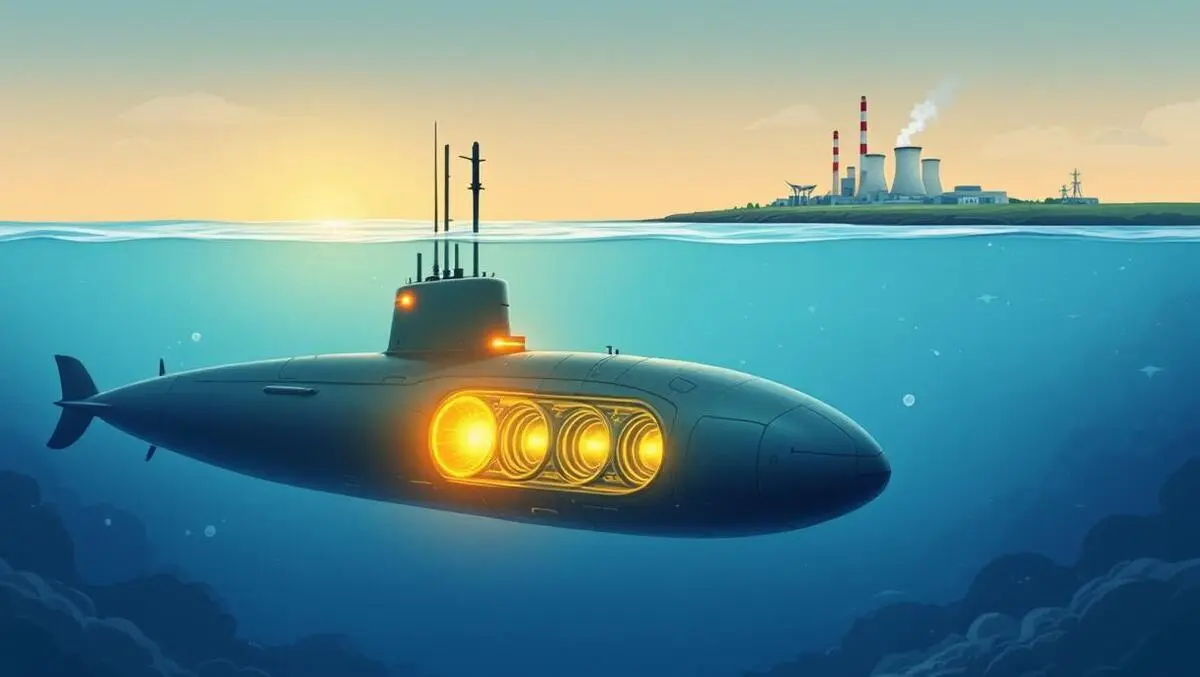
What do Iran's strikes tell us about nuclear risk, and how does AUKUS fit in?
The recent United States strikes on Iranian nuclear enrichment facilities have prompted renewed scrutiny of nuclear risks and brought renewed discussion about the relationship between military nuclear activities and projects such as Australia's AUKUS submarine programme.
The Iranian sites targeted—Fordow, Natanz, and Isfahan—were dedicated to uranium enrichment rather than power generation. These facilities are used to concentrate Uranium-235, with commercial nuclear reactors typically relying on fuel enriched to approximately 3-5%. Iran's effort had reportedly exceeded 60%, inching closer to the 90% threshold defined as weapons-grade—a level compatible with the uranium fuel used in the "Little Boy" bomb dropped on Hiroshima.
The presence of military action at such facilities often gives rise to concerns about the proliferation of weapons-grade material and the potential for nuclear weapon development. The strike has influenced the public perception of nuclear risk, particularly as it relates to military or defence applications in other contexts.
AUKUS and nuclear material
Australia's involvement in the AUKUS agreement with the United Kingdom and United States includes plans to operate nuclear-powered submarines, relying on highly enriched uranium (HEU) for propulsion. This has generated some apprehension in Australia, as community members seek clarification on whether the presence of weapons-grade uranium in submarine reactors might pose similar risks to those seen in regions such as Iran.
Mark Schneider, Chief Nuclear Officer at UBH Group and former United States Navy nuclear engineer, responded to these concerns by drawing a clear distinction between the uranium used in nuclear propulsion and nuclear weapons.
"Weapons-grade uranium in a submarine reactor is not the same thing as a nuclear weapon and it can't be turned into one."
Schneider noted that for a nuclear weapon to be constructed, two critical aspects are necessary: critical mass—sufficient nuclear material—and critical geometry—a specific configuration allowing an uncontrolled chain reaction. While submarine reactors possess a substantial amount of uranium, Schneider clarified that they cannot achieve the configuration required for a detonation, stating: "That geometry can only be achieved using high explosives to compress the material, something completely absent from a reactor. In fact, the reactor is deliberately engineered to make this impossible."
He added that even though submarine reactors contain uranium enriched to weapons-grade levels, design and engineering considerations ensure the material cannot be repurposed for a nuclear weapon. According to Schneider, "Think of uranium as flour. A nuclear weapon is like a slice of sandwich bread. A submarine reactor? It's a chocolate chip cookie. You can't make sandwich bread from a cookie without completely unbaking it, separating out the flour, and starting again. And in nuclear terms, 'unbaking' is extremely complex, expensive, and well beyond the reach of any submarine crew or hostile actor."
Enrichment and waste management
Addressing the rationale for the use of highly enriched uranium in submarine reactors, Schneider pointed towards operational and waste management advantages. "A US or UK submarine reactor is small—about the size of a household rubbish bin—and never needs refuelling. One core lasts the full 33-year life of the vessel. This produces a remarkably small volume of high-level waste—about the size of one wheely bin."
He highlighted a contrast with the French approach, where reactors powered by low-enriched uranium require multiple refuelling cycles. This produces larger volumes of low-level radioactive waste and increases operational complexity and personnel exposure. Schneider added, "A US or UK reactor creates just 60kg of low-level waste per year during routine operations and maintenance—a tiny fraction of what's generated through multiple refuelling cycles over decades."
Proliferation controls
Schneider asserted that carefully controlled, engineered nuclear technology, such as that to be deployed on AUKUS submarines, bears little resemblance to the scenarios seen in Iran. "The situation in Iran rightly raises global concerns about nuclear proliferation. But it also highlights how controlled, highly engineered nuclear technology, like that in AUKUS submarines, is a world apart from what was struck in Fordow and Natanz."
He elaborated that Australian submarine crews would benefit from the safeguards and historical record of US and UK naval nuclear propulsion. "Australia's submariners will be operating the safest and most advanced nuclear propulsion technology available. The decision to go with proven US and UK systems means our defence force will benefit from decades of safe operations, minimal waste, and zero need for mid-life refuelling."
Summing up, Schneider stated: "In short: the technology being offered to Australia is secure, smart, and designed with safety at every level—nuclear material in the service of peace and deterrence, not destruction."


